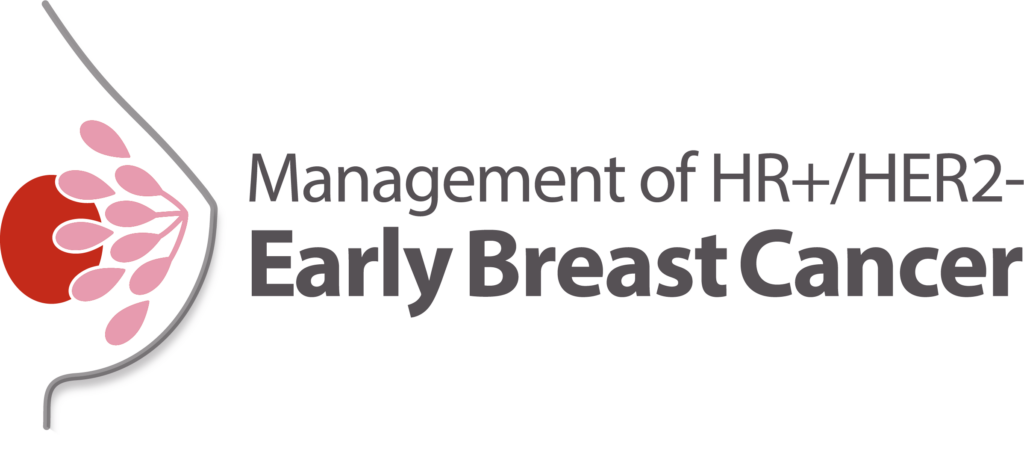medwireNews: Dose-dense adjuvant chemotherapy significantly improves the outcomes of individuals with node-positive, early-stage breast cancer relative to the standard schedule, confirm the end-of-study findings from GIM2 presented at the ESMO Congress 2022 in Paris, France.
Noting that the benefit of dose-dense chemotherapy was observed in both hormone receptor (HR)-positive and negative tumors, investigator Lucia Del Mastro (IRCCS Ospedale Policlinico San Martino, Genova, Italy) said that this “should be considered the optimal regimen” for node-positive patients who are candidates for adjuvant chemotherapy, regardless of HR status.
She added that this final analysis also affirmed the lack of benefit associated with the addition of fluorouracil to epirubicin–cyclophosphamide plus paclitaxel observed in the primary analysis conducted at a median follow-up of 7 years.
In the open-label phase 3 trial – which had a 2×2 factorial design – 2091 patients with node-positive early-stage disease were randomly assigned to receive four cycles of epirubicin plus cyclophosphamide with or without fluorouracil followed by four cycles of paclitaxel, where the agents were given either on the dose-dense schedule of every 2 weeks (with pegfilgrastim support) or the standard schedule of every 3 weeks.
Participants were aged a median of 51–53 years, and the majority in each of the four study arms had tumors that were HR-positive (77.1–81.3%) and HER2-negative (59.8–63.4%).
At a median follow-up of 15.2 years, dose-dense adjuvant chemotherapy was associated with a significant improvement in the primary endpoint of disease-free survival (DFS) versus standard chemotherapy, at a hazard ratio for a disease event or death of 0.77.
The 15-year DFS rates were 61% and 52%, respectively, translating into an absolute between-group difference of 9 percentage points in favor of the dose-dense regimen.
The secondary endpoint of overall survival (OS) was similarly significantly boosted with dose-dense versus standard chemotherapy, at a hazard ratio for death of 0.72. The OS rate at 15 years was 76% in the dose-dense chemotherapy group and 69% in the standard chemotherapy group, giving an absolute difference of 7 percentage points.
Del Mastro highlighted that the DFS and OS advantage associated with the dose-dense schedule was especially marked for participants with HR-negative disease, at significant hazard ratios of 0.69 and 0.58, respectively, and an absolute benefit at 15 years of 12 percentage points for both endpoints.
But she stressed that patients with HR-positive breast cancer also derived a significant DFS and OS benefit from dose-dense chemotherapy, with respective hazard ratios of 0.81 and 0.78 relative to standard chemotherapy, and 15-year absolute differences of 7 percentage points for DFS and 5 percentage points for OS in favor of the dose-dense regimen.
The investigator also presented the long-term data for the fluorouracil comparison, which showed no significant improvement in either DFS or OS with the addition of fluorouracil to epirubicin–cyclophosphamide plus paclitaxel. The 15-year DFS rates with versus without fluorouracil were 55% and 59%, respectively, while the OS rates at this timepoint were 72% and 74%.
Peter Dubsky (Breast Center St Anna, Lucerne, Switzerland) – who discussed the presentation – described the absolute risk reduction with the use of dose-dense chemotherapy as “very meaningful,” and pointed out that “these are moderate hazard ratios that were seen early in the trial and that play out into very large, very consistent, and absolute benefits to these women in the trial.”
The discussant noted that “this trial has already informed many guidelines, including the ESMO guidelines, perhaps most importantly in simply getting rid of [fluorouracil] in the anthracycline regimens.”
But he highlighted that taxane use has evolved during the course of the trial and paclitaxel every 3 weeks is “no longer considered standard in fit patients,” and drew attention to ongoing research evaluating albumin-bound paclitaxel and the “very early” research into orally available taxanes.
medwireNews is an independent medical news service provided by Springer Healthcare Ltd. © 2022 Springer Healthcare Ltd, part of the Springer Nature Group
ESMO Congress 2022; Paris, France: 9–13 September
Author: Shreeya Nanda

